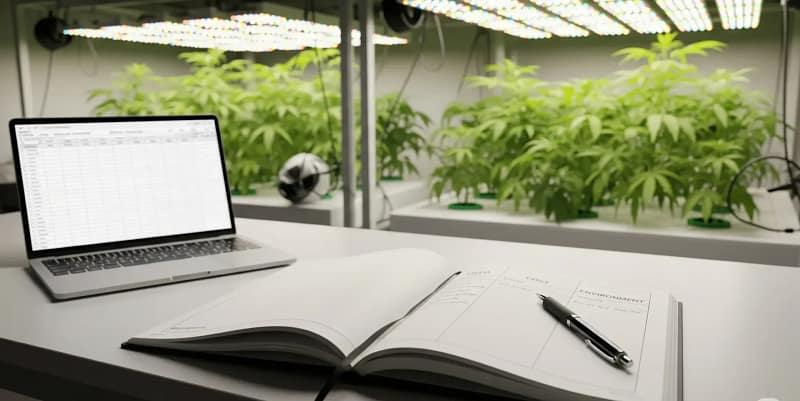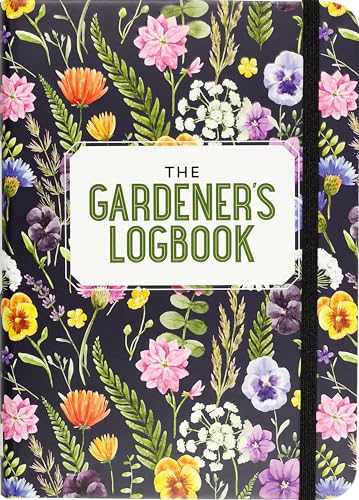I once thought a grow journal was a waste of time. I figured my gut feelings and a good eye for plants were enough. I wasted four harvests before tracking properly, each one a mystery of unlogged pH swings, missed nutrient swaps, and forgotten light schedules. My notebook, a chaotic mess of scribbled notes and coffee stains, was useless. I finally got serious after my 2023 journal exposed a $1,200 lighting mistake. My plants were stretching, and my yields were pathetic. The journal revealed a simple truth: my lights were too far from the canopy, and the wattage was not powerful enough. Without the data, I would have blamed the genetics and repeated the same mistake. Unlogged grows are blind grows.
WARNING: Overfeeding kills plants. Cannabis laws vary. Template for legal crops only.
The 5 Pillars of Grow Tracking
Your grow journal is your operation’s black box—useless until disaster strikes. But with the right structure, it becomes a tool for proactive problem-solving. My method is built on five pillars of data, each one a crucial piece of the puzzle.
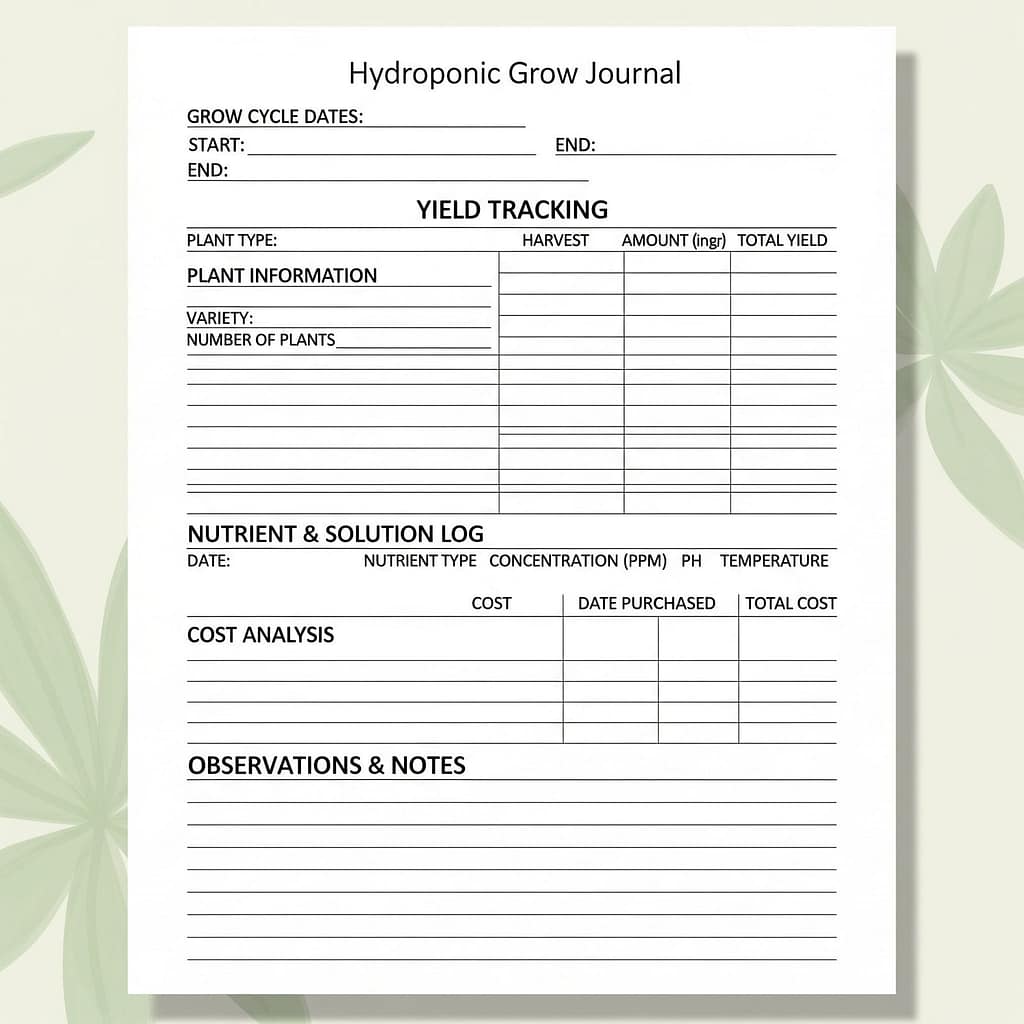
- Yield: The final number. This isn’t just about weight; it’s about quality. We track gram-per-watt (GPW) to measure our efficiency and harvest quality to ensure a consistent, high-end product.
- Cost: The hidden killer. Most growers only track their initial costs. My journals track everything from electricity to labor to replacement parts, so I can see my true ROI.
- Environment: The silent variable. Your grow room’s temperature, humidity, and light are all crucial. A sudden spike in temperature can cause a pH swing, a lesson I learned the hard way.
- Notes: The human element. This is where you document your mistakes, your successes, and your hunches. Did you notice a new bug? Did you prune a plant too hard? This is where you log the context behind your numbers.
- Images: The visual record. A picture is worth a thousand words. A weekly top-down canopy shot and a root photo can tell you more than a whole page of notes.
Yield That Actually Pays
This is where the rubber meets the road. Your yield isn’t just a number; it’s a measure of your success.
- Gram-Per-Watt Math: GPW = dry yield (g) / total watts. This simple formula is the most important metric you can track. It’s your report card.
- Harvest Quality Scoring: Track more than just weight. A simple 1-10 quality score, based on aroma, density, and color, will help you standardize your output.
- Cost Analysis That Hurts (But Helps): This is the most brutal section of my journal. I track everything. From electricity to nutrients to labor hours. My 2023 journal exposed a $1,200 lighting mistake. It’s a painful but necessary truth.
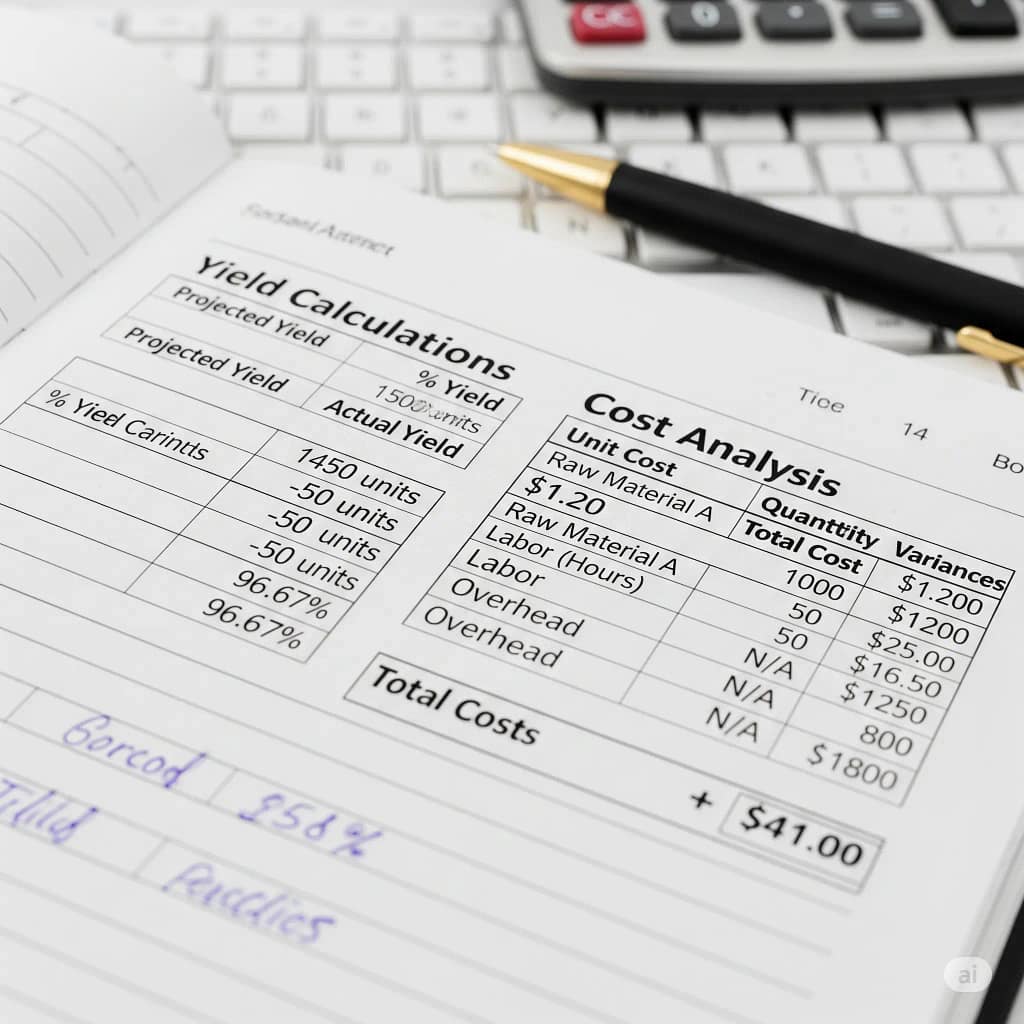
Cost Analysis That Hurts (But Helps)
I’m a forensic accountant for cannabis. And I’m here to tell you that 90% of “genetics” complaints are actually tracking failures. Growers blame their seeds when the real culprit is a lack of data. This is where you track the hidden costs that eat into your profit.
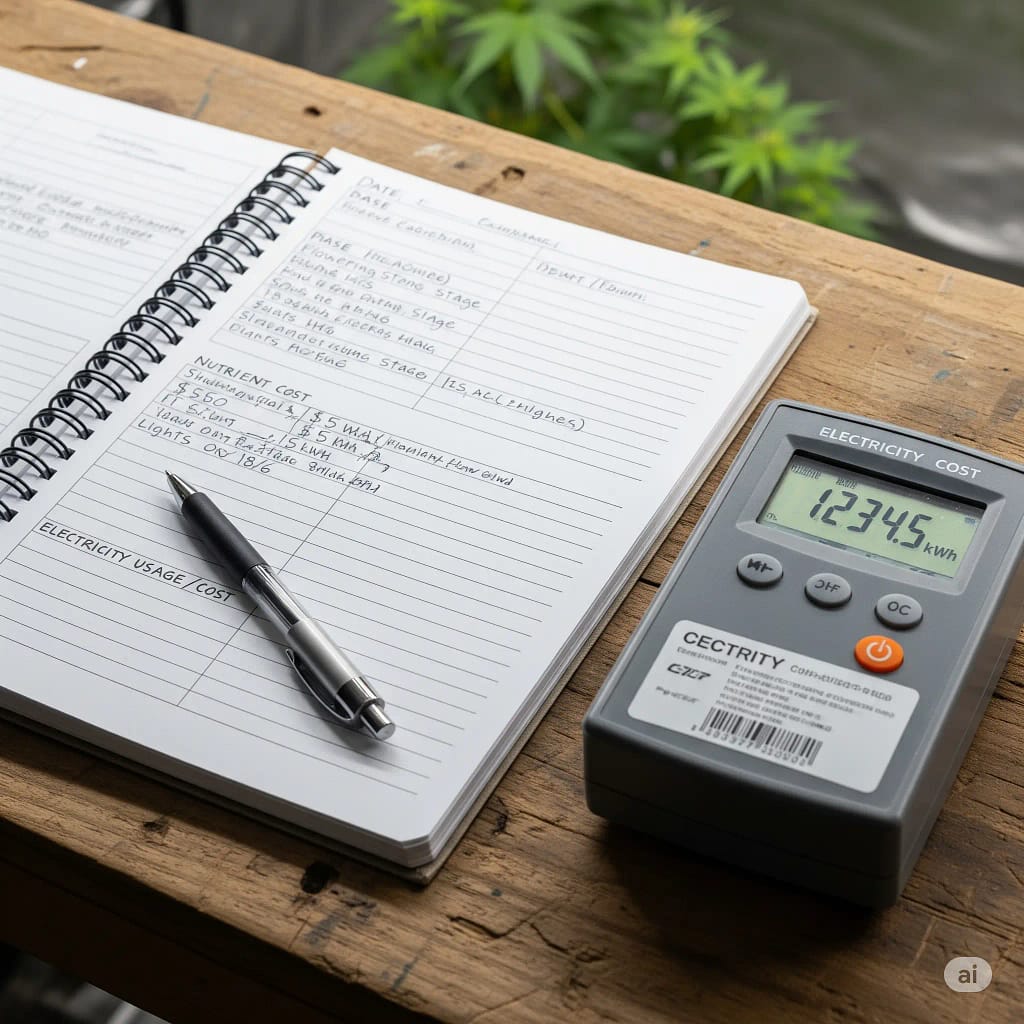
- Electricity: Your lights and pumps are a massive electricity sink. Your journal should log your wattage and your hours per day, so you can see your true cost.
- Nutrients: A good journal will track your nutrient cost per gallon, so you can see if you’re overfeeding or underfeeding your plants.
- Labor: This is the hidden cost. How many hours a week are you spending on your grow? Your journal should track this, so you can see your true ROI.
Environmental Forensics
Your grow journal is a crime scene log. You are the detective. Every metric is a clue.
- VPD Tracking: VPD (Vapor Pressure Deficit) is the most crucial metric you can track. It’s a measure of your room’s temperature and humidity. My 2023 journal exposed a mold outbreak that was caused by a sudden spike in humidity. My unchecked pH drift cost 22% yield last summer.
- Light Intensity Logs: A weekly light intensity log is a non-negotiable. I use a PAR meter to track my light intensity, and I log it in my journal.
- Temp Swings: A sudden spike in temperature can cause a pH swing. Your journal should log your room’s temperature and humidity every day, so you can see your true environmental swings.
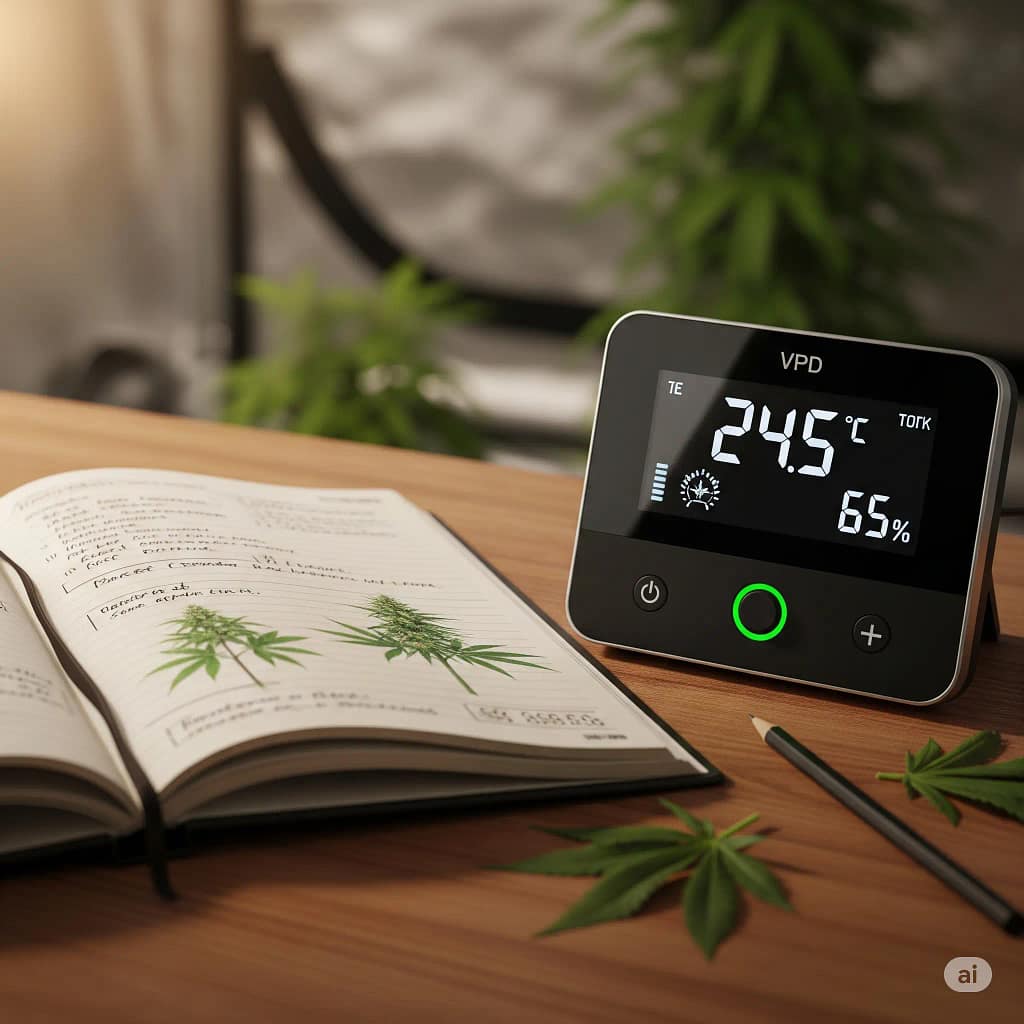
From Data to Decisions
Your journal is not a book to be read; it’s a tool to be used. Here’s how you use it to make proactive decisions.

- Cross-Reference: Did you notice a new bug? Did you prune a plant too hard? Cross-reference your notes with your numbers to find the cause of a problem.
- Spot Trends: Look for trends in your data. Did your pH spike on the same day every week? Did your EC drop after a specific event? This is your first clue to a deeper problem.
- Predict Problems: My biggest “aha!” moment was how cross-referencing week 3 temps predicted my mold outbreak. The journal showed a spike in temperature and humidity, a clear sign of a mold outbreak. Without the data, I would have blamed the genetics and repeated the same mistake.
Premium Upgrade Path
My journey from a novice to a seasoned grower was filled with failures and triumphs. A grow journal is the single most important tool you can own. A good journal is cheaper than repeating the same mistakes.
- Free Template: The free Google Sheets template is a great way to start. It’s a simple, easy-to-use tool that does all the math for you.
- Notion Template: A more advanced template with linked databases and automated alerts.
- Master Grower’s Journal: My premium physical book with a video course and a community of growers.
Pro Toolkit: Tracking Weapons
These are the tools I trust with my data. They’ve been torture-tested and have survived my paranoid tinkering.
AC Infinity Gardening Journal Logbook
A hardbound journal with structured sections for tracking pH, EC, nutrients, and environmental data across growth stages.
”Plant Log” pages allow you to track each plant you choose, from its beginnings in your garden through the growing season and beyond.
Note successes for next year.
Note what didn’t work and why, so you won’t repeat mistakes.
Tuck photos, seed packets, and garden center receipts within the inside back cover pocket.
Why Growers Love It:
- Hydroponic-Specific Layout: Includes tables for daily pH/EC logging, nutrient dosing, and reservoir changes, reducing manual note-taking effort.
- Durable Design: spill-resistant cover and tear-proof pages withstand humid grow environments.
- Strain Comparison Charts: Allows side-by-side analysis of multiple plants to identify optimal genetics
Room for Improvement:
- No Digital Integration: Lacks sync capabilities with smart sensors or apps.
- Fixed Entry Space: Limited space for photo attachments or detailed sketches.
Is It Right for Your Garden? Ideal for traditionalists who prefer pen-and-paper tracking. Use this to correlate environmental shifts with plant health trends. Check Price on Amazon.
Govee WiFi Hygrometer Thermometer 3-Pack
Wireless sensors that monitor temperature/humidity 24/7 and sync data to a smartphone app for export.
- Smart WiFi Temperature Sensor: With the 3 included sensors, you can easily monitor temperature and humidity data in real…
- Versatile and Accurate: Swiss-made sensors provide a wide range for detecting humidity and temperature. The range for te…
- Alert Function: Set preset temperature and humidity ranges, and the Govee APP will alert you via cell phone when the sma…
Bloom & Boost:
- Automated Data Logging: Graphs trends in real-time, eliminating manual humidity/temp recordings.
- Multi-Sensor Support: Place units across tents to map microclimates and hotspot risks.
- Custom Alerts: Notifications for VPD outliers prevent mold or heat stress.
The Trade-Off:
- Battery Dependency: Requires AAA battery replacements every 4-6 months.
- No EC/pH Tracking: Limited to environmental metrics only.
Who This Is For: Growers automating climate logs. Pair with pH pens to cross-reference environmental and nutrient data. See Latest Discount.
General Hydroponics pH Control Kit
A complete kit with pH test solution, calibration fluid, and guide for maintaining optimal 5.5-6.5 ranges.
- General Hydroponics pH Control Kit contains everything you need to measure pH levels of your hydroponic grow reservoirs
- RELIABLE RESULTS: The streamlined testing system delivers fast, accurate, and easy-to read results every time
- ALL-IN-ONE KIT: Includes 8 oz. General Hydroponics pH Up Liquid, 8 oz. General Hydroponics pH Down Liquid, 1 oz. Test In…
Root-Level Benefits:
- Precision Tools: Drop-based testing ensures accurate pH readings without electronic drift.
- Educational Guide: Includes cheat sheets for interpreting color results and adjustment calculations.
- Cost-Effective: cheaper than digital meters for growers on a budget.
Not a Perfect Fit For:
- High-Frequency Testing: Manual process becomes tedious for large-scale grows.
- Low-Light Visibility: Color interpretation challenges under LED grow lights.
Our Grow-O-Meter Says: A staple for beginners mastering pH management. Log results daily to identify drift patterns early. Check Price on Amazon.
Vivosun Digital pH Meter and TDS Combo Kit
Dual meters with auto-calibration and LCD screens for tracking pH/PPM in hydroponic reservoirs.
- Application: Great for all home and laboratory TDS & pH testing applications including aquariums, swimming pools
- PH Meter: Full measurement range of pH 0 – 14, reliable and quick readings
- 3-in-1 TDS Meter: Measurement Range 0-9990ppm, 0-9990µs/cm; Accuracy ± 2%, 0.1- 80.0°C, 32.0-176.0°F; Note: This meter c…
Top-Shelf Features:
- Dual-Parameter Logging: Simultaneously records pH and PPM for nutrient consistency.
- Data Hold Function: Freezes readings for easy transcription into journals.
- Storage Solution: Includes protective cases and calibration powders to prolong probe life.
A Word of Caution:
- Calibration Demands: Requires weekly calibration to maintain accuracy.
- Fragile Probes: Glass pH sensors need careful handling to avoid cracks.
Is It Right for Your Garden? Essential for growers quantifying nutrient strength. Export data to digital journals for trend analysis. See Latest Discount.
General Hydroponics FloraGro Nutrient Bundle
A 3-part nutrient system with logbook included for recording dosing schedules and plant responses.
- The Flora Series is a hydroponic-based nutrient system that helps fulfill your plants’ nutrient needs at every stage of …
- Nutrients included in the Series are FloraMicro, FloraBloom, and FloraGro
- FloraMicro: contains nitrogen and calcium, as well as trace minerals, which are essential for a comprehensive hydroponic…
The Green Thumb Upside:
- Integrated Journal: Includes a feeding schedule tracker and deficiency troubleshooting guide.
- Pre-Measured Lines: Bottle markers indicate mL/gal ratios to simplify mixing math.
- Stable Formulation: Buffered to minimize pH swings, reducing adjustment logging.
Grower’s Notes:
- Learning Curve: Requires understanding of 3-part mixing ratios for different growth stages.
- No Digital Tools: Logbook is basic; best paired with detailed journals.
The Seedling Lowdown: Perfect for beginners establishing a logging routine. Record EC changes after each feeding to dial in ratios. See Latest Discount.
WARNING: Overfeeding kills plants. Cannabis laws vary. Template for legal crops only.
FAQ – Upgrade Red Flags & Green Lights
Why is a grow journal more useful than just observing my plants?
A grow journal provides an objective, historical record of your grow. It allows you to track key metrics like pH, temperature, and light intensity over time, helping you identify trends and diagnose problems that your eyes might miss.
What are the most important things to track in a grow journal?
The five most important pillars to track are yield (including gram-per-watt), costs, environmental metrics (like temperature and humidity), your own notes on observations, and a visual record with photos of your plants.
What is Gram-Per-Watt (GPW) and why is it important to track?
Gram-per-watt (GPW) is a simple but crucial metric that measures your grow’s efficiency by dividing your dry yield in grams by the total wattage of your lights. Tracking this helps you see if your equipment and methods are truly effective over time.
How can a grow journal help me save money?
A grow journal helps you track all of your costs, from electricity and nutrients to labor. This allows you to identify hidden expenses and make smarter, more profitable decisions. It can prevent you from repeating expensive mistakes.
How can I use a grow journal to prevent problems before they happen?
By logging your data consistently, you can spot early trends that signal a problem. For example, a slow but steady increase in temperature and humidity in your journal can be a leading indicator of an upcoming mold or pest outbreak.
Sources

